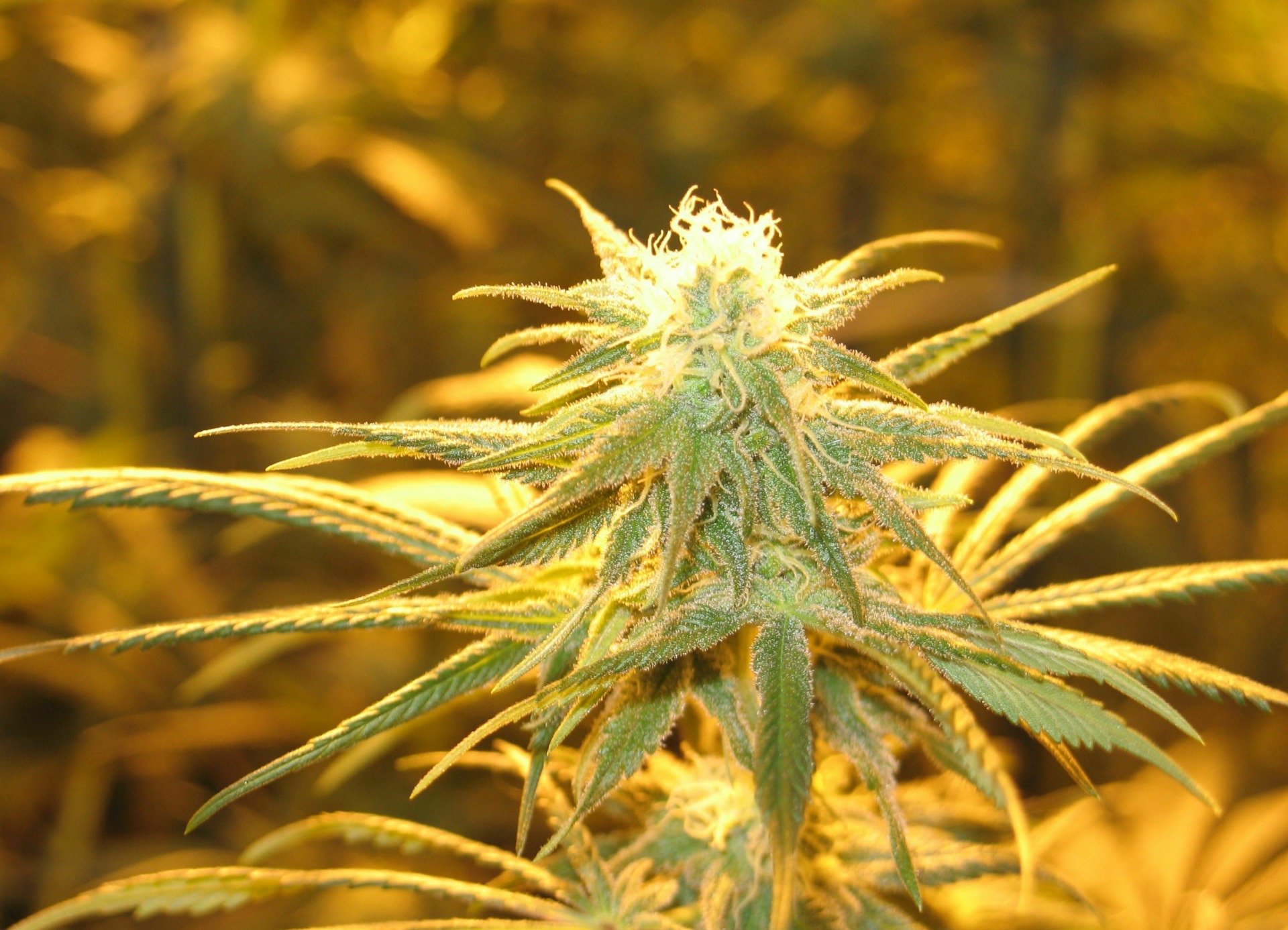Have you noticed anything different at your local cannabis retailer since adult-use marijuana became legal in California? Most dispensaries have experienced a sharp reduction in the variety of products they’re currently able to offer consumers.
Let’s take a look at what’s happening with California’s marijuana supply chain to see why certain cannabis products are no longer available.
FOLLOW US ON FACEBOOK &
INSTAGRAM
Paying to Play in the Legal Cannabis Industry
The cost to become a legal, regulated cannabis business—whether a dispensary, a distributor or a permitted farm— is exorbitant. In Sacramento, for example, an indoor cannabis farmer will now pay between $9,000 and $28,000 for a city-issued permit.
The cost of the city permit is piled on top of state licensing fees, taxes, other local permits and standard start-up business expenses. This entire bundle comes at a steep price. And it’s at the heart of the troubling exodus of mom-and-pop cannabis farmers and producers, who haven’t been able to scale up to meet the rigorous—and expensive—legal benchmarks required to continue their operations.
Is There Room in Legal Cannabis for Small Cultivators & Businesses?
During the heated discussions that led up to the adoption of Proposition 64, cannabis activists told regulators that it was imperative for small cultivators and manufacturers to be protected from the advent of “Big Cannabis.” Historically, the bulk of the nation’s cannabis has been grown and produced by small-scale Emerald Triangle farmers.
But today, a significant percentage of these farmers can’t afford to make the transition to legal cannabis producers. Their crops aren’t large enough to justify the tens, if not hundreds of thousands of dollars necessary to go legal.
Customers are already seeing what Hezekiah Allen, director of the California Growers Association, characterized as just one of the many “unintended consequences” of legalization: a startling reduction in the range of cannabis products on dispensary shelves.
RELATED: OUTDOOR CANNABIS FARMERS FACING UNPRECEDENTED CRISIS IN CA
This issue is most visible when it comes to cannabis edible products. As investors eye opportunities in the cannabis realm, the world of edibles looms large. More and more people are turning to marijuana edibles as an alternative to smoking or vaping, creating excitement with venture capitalists and large-scale, gourmet food businesses. Conversely, others see the advent of large-scale edibles manufacturers as an extinction-level event for small producers.
Marijuana Dispensaries Must Buy From Compliant Cannabis Companies
Russell Green, owner of Kure Wellness, a dispensary in Mendocino County, is one of the only dispensary owners in the region who was born and raised in the Emerald Triangle. A third-generation county resident, Russell’s family grew a little marijuana to supplement the family income.
Russell, who grew cannabis for a living, saw the handwriting on the wall and opened his dispensary three years ago. Today, like everyone else in the industry, he’s trying to put a thick thread into a thin needle.
“Prior to legalization, when a farmer came to me to try and sell his flowers, it was a somewhat laissez faire situation. As a farmer myself, I could easily evaluate which flowers would do well on my shelves. Today, the first thing we have to look at is if the producer has a state license, a certificate of insurance and if their packaging is compliant,” Russell explains. “Right now, you have to be a big enterprise to put out a compliant edible, so customers have seen a shift in the brands dispensaries are currently able to offer.”
The High Cost of Cannabis Testing
Cannabis must be stored in optimal conditions to keep it from degrading. Because of that, dispensaries must purchase only as much flower as they can sell in a short period of time. New regulations require cannabis to be lab tested, and for dispensaries like Kure, the costs of testing are creating additional challenges.
“If I buy three pounds from a farm, it’s hard on the margins. To compete in today’s market, you need to procure 50-pound lots to make testing more affordable. But if I take 50 pounds from a farmer and get it tested, I have to keep the entire 50 pounds,” Russell says.
For single dispensaries who wish to offer customers a wide selection of flowers, storing hundreds or even thousands of pounds of inventory is unrealistic. This is another reason you may be seeing a reduction in the number of marijuana strains available at your dispensary.
Well-Established, Small, Cannabis Edibles Companies Having Trouble Going Legal
Prior to legalization, hundreds—perhaps thousands—of cottage-industry cannabis product manufacturers were cooking up a storm, offering up products from the sublime to the ridiculous. Regulators point to the adoption of safe health practices as part of the upside of legalization.
Ironically, California’s Homemade Food Act (AB 1616) has allowed for the production of cottage food operations for many years. The bill enables home cooks to prepare and sell a wide array of foods, including baked goods, toffee, jams, nut butters and other items not containing perishable ingredients.
But AB1616 doesn’t allow for cannabis to be added to these state-approved, homemade products. AB1616 has no crossover with the state’s cannabis regulations, making it even harder for small marijuana edibles companies to become legally compliant.
If California goes the way of Colorado, in a few years, only a handful of companies will be producing all of the edibles available on dispensary shelves. Even celebrated brands like Golden Goddess, HigherVeda and Auntie Dolores are having significant challenges licensing and operating their edibles businesses. Finding a community that approves commercial cannabis kitchens is nearly impossible, even for these well-known producers.
If licensing fees, taxes and locations to create your product aren’t enough challenges, edibles recipes had to be modified too. To comply with the state’s new regulations, cannabis edibles must be limited to 100 milligrams of tetrahydrocannabinol (THC) per packaged item. A few exceptions are being made for a very limited number of items produced solely for medical marijuana patients—such as tinctures—but this costly do-over was yet another unintended consequence of legalization.
Cannabis Product Packaging Comes at a Price
Edibles manufacturers must also now have compliant packaging. In addition to standard labeling requirements found on any foods—ingredients, allergens and use-by dates— packaging must comply with stringent childproof regulations.
Your cannabidiol (CBD) chocolates or cannabis candies must be sold in a tamper-evident, opaque package. And if they contain more than one serving, the items must be packaged in a container that can be re-sealed to remain childproof.
Some patients with physical limitations have complained that their new edibles packaging and the additional exit bags dispensaries are required to use are extremely challenging for them to open. While everyone welcomes safety, some industry experts wonder if cannabis packaging regulations have gone too far. Some ask how it’s fair that cannabis products are subject to such strict regulations while over-the-counter medications can be packaged in barely childproof containers and sold at grocers or retailers to virtually anyone of any age.
“This is just another example of the continuance of a prohibition mentality prettied up and thrust into today’s legal framework,” grumbled one cannabis producer, who’s currently searching for investment money to re-start their edibles business.
Legalization Opens Marijuana Manufacturers Up to Crime
Another area where legalization has raised costs is security. The names of every legal cannabis business are posted on the state’s cannabis website. And with no clear pathway to banking, marijuana manufacturers have nowhere to stash their cash, making them extremely vulnerable targets for burglary. This is compelling business owners to invest in additional security services. Every one of these costly requirements acts as another nail in the coffin of cottage-industry manufacturers.
Is Anything Being Done to Address the Burden Put on Small Canna-Businesses?
California continues to remain open to changes in current regulations. Lawmakers and activists are still pressuring regulators to maintain their commitment to supporting small cannabis farms and not just Big Cannabis.
Dispensary owners like Russell hope to expand their operations in the future. Russell is committed to supporting local mom-and-pop producers, who are also his neighbors, friends and colleagues—some of the very same folks who helped birth the California cannabis revolution.
“As time goes on, I’m hoping to put up money for shared licenses,” Russell says. “This will provide access for small, boutique producers who would be able cook out of our commercial kitchen, or hash artists who could use a rosin press in our manufacturing facility. This may create an on-ramp allowing our small-batch, artisan producers to competitively return to the market, and a way we can support an essential part of the cannabis community.”
Photo credit: Bob Doran
If you’re new to cannabis and want to learn more, take a look at our Cannabis 101 post. HelloMD can help you get your medical marijuana recommendation; it’s easy, private and 100% online.






